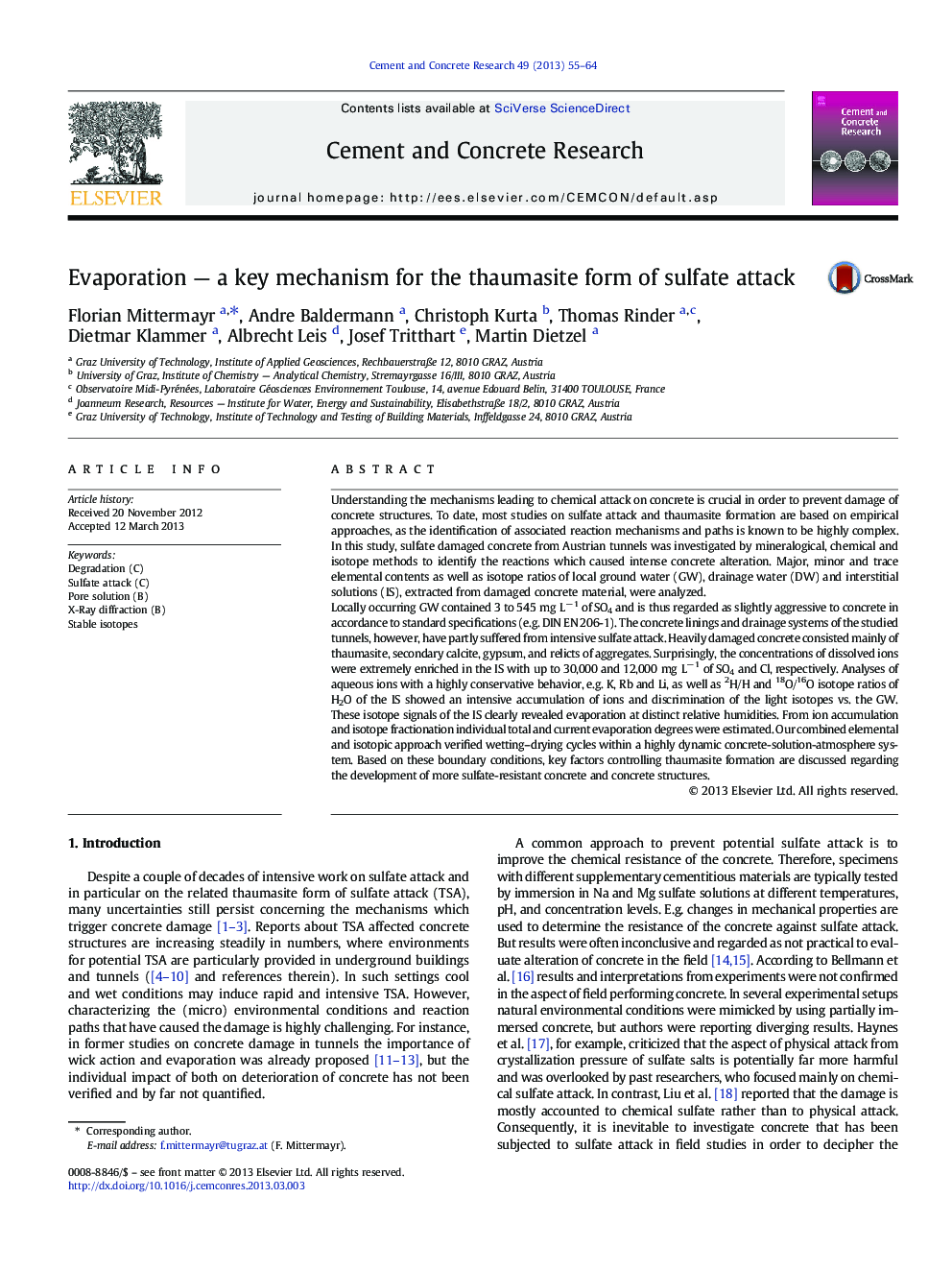| کد مقاله | کد نشریه | سال انتشار | مقاله انگلیسی | نسخه تمام متن |
|---|---|---|---|---|
| 1456481 | 1509772 | 2013 | 10 صفحه PDF | دانلود رایگان |

Understanding the mechanisms leading to chemical attack on concrete is crucial in order to prevent damage of concrete structures. To date, most studies on sulfate attack and thaumasite formation are based on empirical approaches, as the identification of associated reaction mechanisms and paths is known to be highly complex. In this study, sulfate damaged concrete from Austrian tunnels was investigated by mineralogical, chemical and isotope methods to identify the reactions which caused intense concrete alteration. Major, minor and trace elemental contents as well as isotope ratios of local ground water (GW), drainage water (DW) and interstitial solutions (IS), extracted from damaged concrete material, were analyzed.Locally occurring GW contained 3 to 545 mg L− 1 of SO4 and is thus regarded as slightly aggressive to concrete in accordance to standard specifications (e.g. DIN EN 206-1). The concrete linings and drainage systems of the studied tunnels, however, have partly suffered from intensive sulfate attack. Heavily damaged concrete consisted mainly of thaumasite, secondary calcite, gypsum, and relicts of aggregates. Surprisingly, the concentrations of dissolved ions were extremely enriched in the IS with up to 30,000 and 12,000 mg L− 1 of SO4 and Cl, respectively. Analyses of aqueous ions with a highly conservative behavior, e.g. K, Rb and Li, as well as 2H/H and 18O/16O isotope ratios of H2O of the IS showed an intensive accumulation of ions and discrimination of the light isotopes vs. the GW. These isotope signals of the IS clearly revealed evaporation at distinct relative humidities. From ion accumulation and isotope fractionation individual total and current evaporation degrees were estimated. Our combined elemental and isotopic approach verified wetting–drying cycles within a highly dynamic concrete-solution-atmosphere system. Based on these boundary conditions, key factors controlling thaumasite formation are discussed regarding the development of more sulfate-resistant concrete and concrete structures.
Journal: Cement and Concrete Research - Volume 49, July 2013, Pages 55–64